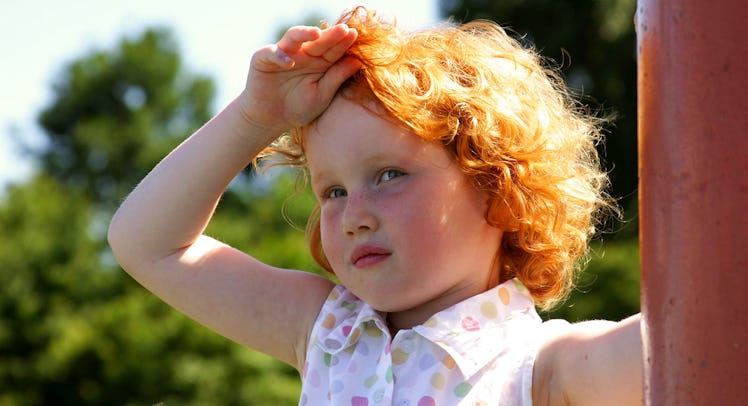6 Easy Steps to Prevent Your Child From Getting Heatstroke
Children are more at risk for getting heatstroke due to a combination of physiological and developmental factors that could be deadly, doctors warn. But attentive parents can help.

Getting hot and sweaty in the summertime is to be expected, but when it happens to kids, it’s not something parents should keep their cool about. Young children are significantly more at risk for developing heatstroke than adults, a condition where their core temperature reaches deadly levels for a number of physiological and developmental reasons.
One reason children are so susceptible to heatstroke is simply a matter of size: The smaller a person is, the faster they overheat. “Children have a smaller body surface area compared to an adult,” explains Dr. Sashini Seeni, a general practitioner. “Hence, less surface area to regulate their temperature. This also means they have less space to sweat, which means a less effective body-cooling system.”
Sweat helps cool the body off by dampening the skin: When the moisture evaporates it takes some heat with it as well, further cooling the body. When people get too hot, the hypothalamus, part of the brain responsible for regulating body temperature, signals the central nervous system to increase blood circulation to stimulate sweating, effectively cooling them off. But for babies and young children, this internal self-cooling system is not fully developed, so not only do they have less room to sweat, but their brains are less likely to tell their bodies when they need to perspire for their own good.
Before kids experience heatstroke, they will likely show signs of heat exhaustion, a lesser reaction that can snowball fast if caretakers don’t intervene. Symptoms of heat exhaustion include muscle cramps, pale or cold skin, confusion, dizziness, nausea, vomiting, headaches, rapid heartbeat, dark urine, and excessive sweating. However, if kids stop sweating, or if they’re fainting, having trouble breathing, or having seizures, it could be heatstroke, a medical emergency that requires immediate attention.
Heatstroke gets deadly when parents are absent and miss these signs. This is why most heatstroke fatalities happen in the car. In 2018 alone, 52 children died from heatstroke as a result of being left in a hot car, rather than being overdressed or caught in the sun for too long. “Having a child overdressed in extremely hot weather, plus physical activity and lack of hydration can cause heatstroke,” says Dr. Nikola Djordjevic, a family physician from MedAlertHelp.org. “But the occurrence of death due to heatstroke is higher in car-related incidents.”
Djordjevic and Seeni agree that the difference between a sweaty kid on a fun summer day and a child with heatstroke is attentive parents. Moms and dads who realize children heat up much faster and recognize when they need water or shade, or are in serious danger of overheating can rest assured that if they’re paying attention, everything will be fine.
“Caregivers should be able to notice the signs of heat exhaustion and provide an adequate response — undressing, cooling, hydration,” Djordjevic recommends. “If treated immediately, a child can recover from heatstroke, but it’s important that there is someone around to notice the signs.”
Heatstroke Prevention in 6 Steps
- Make sure your child is hydrated. This means water breaks at least every quarter-hour.
- Dress children in breathable, loose-fitting clothing.
- Don’t leave your child in an exposed car on a hot day, unattended or not.
- Don’t ever leave your child in a car on their own.
- If a child experiences muscle cramps, pale or cold skin, confusion, dizziness, nausea, vomiting, headaches, rapid heartbeat, dark urine, and excessive sweating on a hot day, immediately take them to a cool place and hydrate them.
- Don’t wait for your kid to tell you they’ve had enough. If the heat is hard on you, assume it’s that much harder for them. Know when to call it a day.